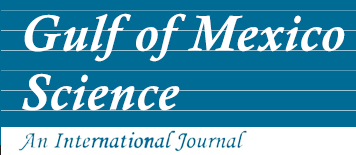Alternate Title
Assessing the Efficacy of Marsh Restoration via Terracing by Comparing Vegetation Density and Nekton Abundance Before and After Restoration
Abstract
Nueces Bay, a Texas estuary, has been heavily affected by human activities including habitat destruction, pollution, and restriction of freshwater input, leading to a loss of nearly all structured habitats in the bay. To create additional habitat and recover some lost ecosystem services, 160 acres of salt-marsh habitat were created in Nueces Bay in 2010 using marsh terracing. Mounds of marine sediment, or terraces, suitable for growth of Spartina alterniflora, an important foundation species in marshes, were constructed. Several volunteer events involving planting of S. alterniflora occurred in 2011, 2012, and 2013, allowing S. alterniflora to become established. The purpose of this study was to determine if this marsh restoration was effective in creating suitable habitat for estuarine species by comparing S. alterniflora shoot density and the faunal assemblage in the restored marsh sites to adjacent, natural marsh areas located nearby. Vegetation and associated marsh fauna were collected from the area planned for terracing and from adjacent natural marshes in 2009, before the restoration. Natural marsh and areas planned for restoration were significantly different. Vegetation was absent and animals rare in the planned restoration area before terracing. The same areas were measured in 2015 after restoration. In 2015, S. alterniflora was present and in densities not significantly different from nearby natural marshes. Associated marsh fauna were also not different in terms of functional group composition, species diversity, and length-to-weight relationships of individual species between natural and restored sites. The restored marsh contained similar vegetation and fauna as the adjacent natural marsh after restoration, whereas prerestoration open-water areas lacked vegetation and contained significantly fewer organisms than natural reference marsh areas. Thus, the restoration provided suitable habitat for S. alterniflora and associated fauna in Nueces Bay.
Recommended Citation
Loveless, J. B. and D. L. Smee.
2018.
Assessing the Efficacy of Marsh Restoration via Terracing by Comparing Vegetation Density and Nekton Abundance Before and After Restoration.
Gulf of Mexico Science
34
(1).
Retrieved from https://aquila.usm.edu/goms/vol34/iss1/5

